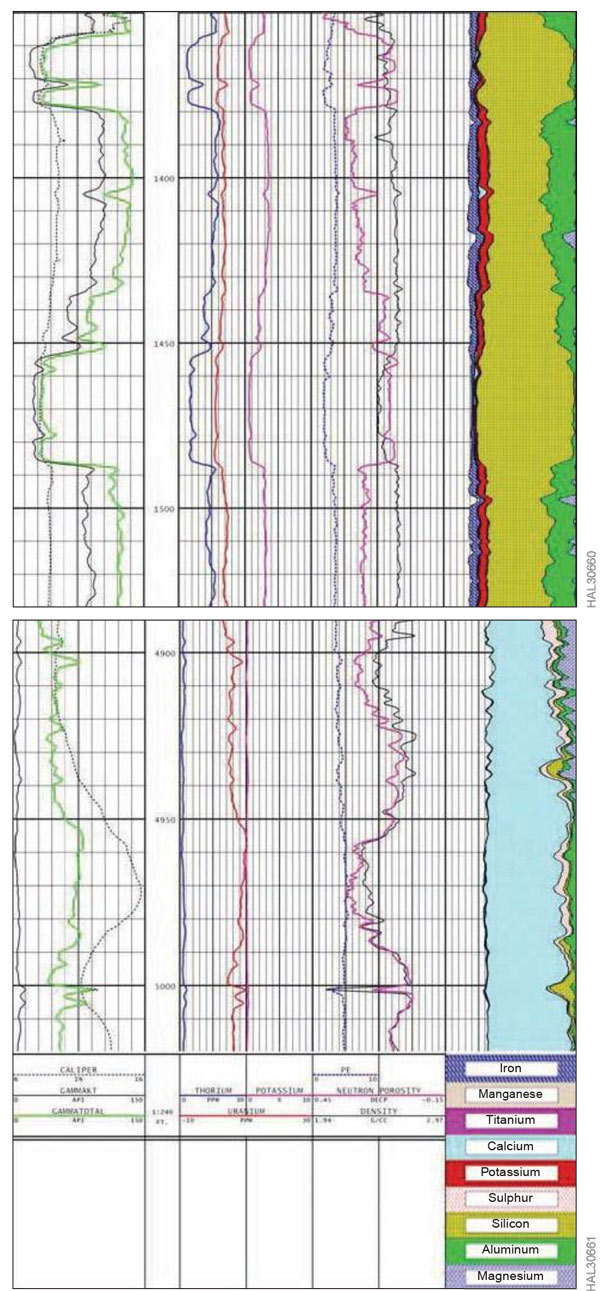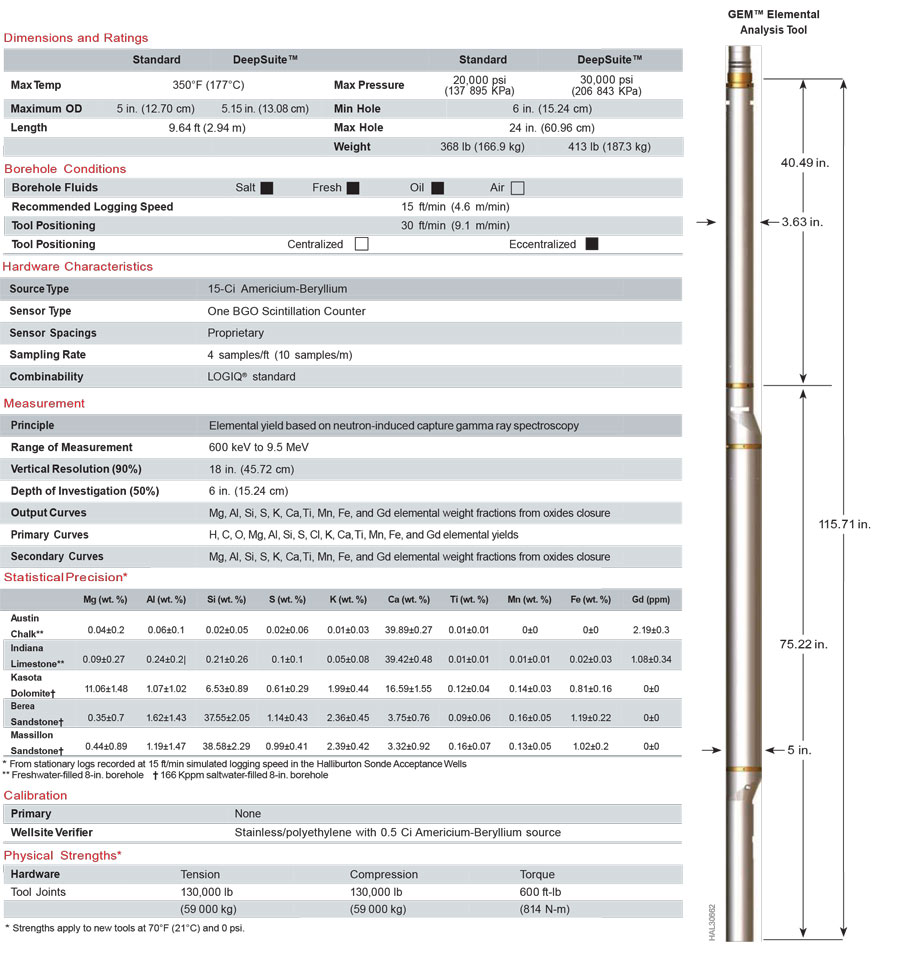Open Hole
GEMTM Elemental Analysis Tool
PRECISE EVALUATION OF COMPLEX MINERALOGIES
OVERVIEW
The Halliburton GEM™ elemental analysis tool offers quick and precise evaluations of complex mineralogies, using proven interpretation processes and integrated petrophysical analysis. A neutron-induced capture gamma ray spectroscopy logging system, the GEM tool is designed to derive elemental contributions contained within the total measured gamma-ray energy spectrum.
The GEM tool can measure elemental yields that are important to mineralogical evaluations in open holes to accurately assess the reservoir and complete the well.
The GEM logging software calculates elemental concentration logs by using an oxides-closure methodology that can be used for
quick-look or detailed mineralogical evaluations. These elemental concentrations can be used to identify geometrical-stratigraphic correlations from well to well. Elemental concentrations can
also be used to calculate matrix-grain density and thermal neutron-absorption (sigma) properties.
The GEM tool uses a chemical source to promote wider application due to cost savings associated with its durability, shorter length, and simple usage requirements. The detector is enclosed in a flask with a eutectic heat sink to enable extended operation at downhole conditions. In addition, the software provides on-site or remote visualizations of the resulting data quickly and accurately, with proven, robust post-processing solutions.
BENEFITS
» Improves accuracy of integrated petrophysical analysis
» Mineral fractions such as gypsum or anhydrite, carbonate, coal, pyrite, salt, siderite, quartz, feldspar, mica, and clay from complex formation analysis
» Matrix-density values for more accurate porosity calculation
» Sigma matrix for cased and openhole sigma saturation analysis and improved neutron-porosity environmental corrections
» Improves permeability estimates based on mineralogy
» Quick cool down of eutectic heat sink for rapid job turnaround
» Borehole shielding for reduced sensitivity to borehole fluids

In this LOGIQ® DSN II™ log example, the subject well was logged twice. The resulting near/far ratio curves and the calculated porosity curves are overlaid to illustrate the high repeatability of DSN II tool porosity measurements.


